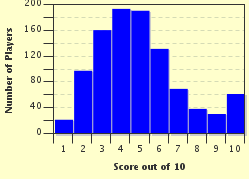Quiz Answer Key and Fun Facts
1. This well-known dish of beef, pate, mushrooms, truffles and a Madeira sauce encased in a pastry crust was named for a famous general. Which dish is it?
2. An American president came in for some criticism after he declared a great fondness for French soups. In what can only be deemed a bold PR move, the White House issued its recipe for this soup, claiming it to be the President's absolute favourite of all soups! Which soup and which President?
3. There's some disagreement over the origin of the famed Reuben sandwich, a staple on many deli/diner menus in North America. One version has it that it was created by an Omaha grocer for his poker pals. Who was the grocer?
4. Jeanne Poisson, mistress of one of the French kings, was mightily interested in good food, among other things, and her title has been appended to a variety of dishes. What was her title?
5. The stars of stage, screen and television have been honoured by having edibles and potables named for them. For whom is the Margarita supposedly named?
6. Eggs Benedict is a popular breakfast dish, and there are two versions of how the dish got its name. I've listed one of the genuine contenders here. Who is it?
7. Coquilles St. Jacques, a delicious concoction of scallops, butter, garlic and cream, is named for one of the apostles. True or false?
8. This famous pasta dish was reputedly created for his wife by an Italian restaurateur.
9. In 1950, Giuseppe Cipriani, owner of Harry's Bar in Venice named this beef dish for a Venetian painter. What dish?
10. A very good champagne is named for a Benedictine monk who lived in the 17th century. What is the champagne called?
Source: Author
Cymruambyth
This quiz was reviewed by FunTrivia editor
Bruyere before going online.
Any errors found in FunTrivia content are routinely corrected through our feedback system.


